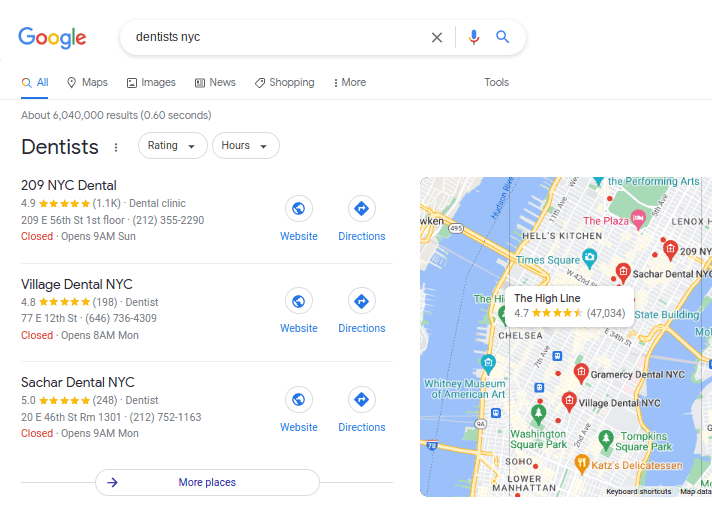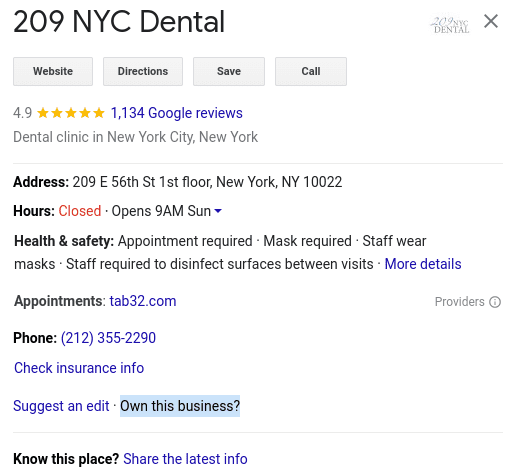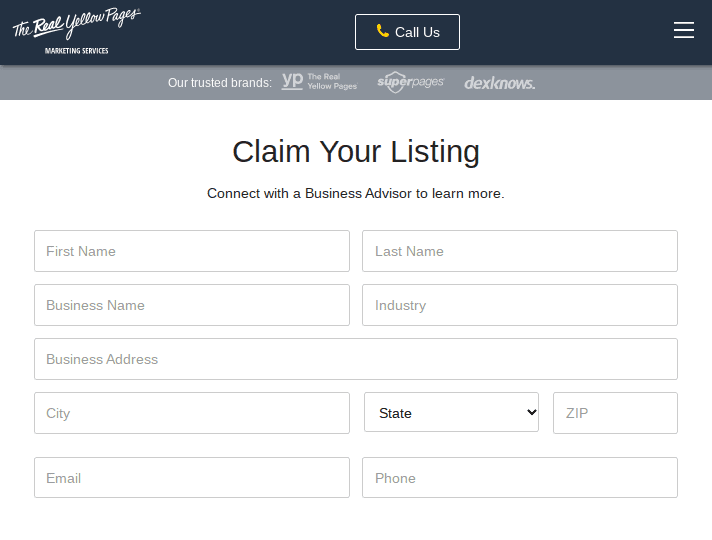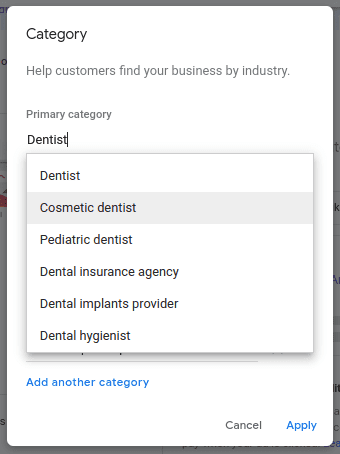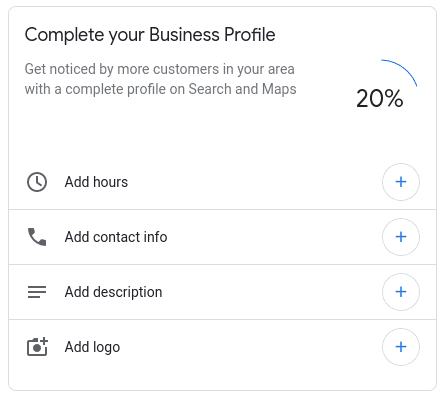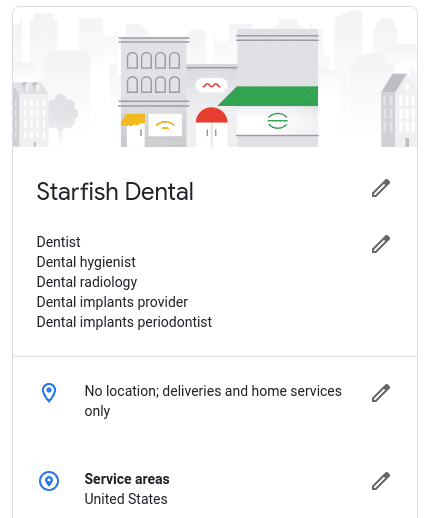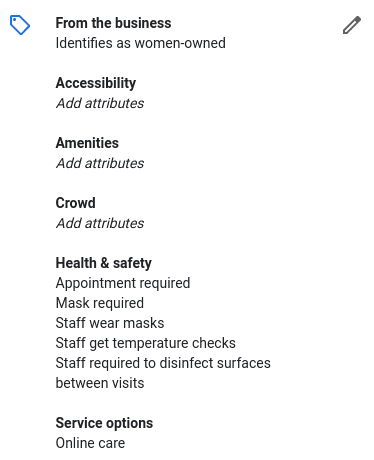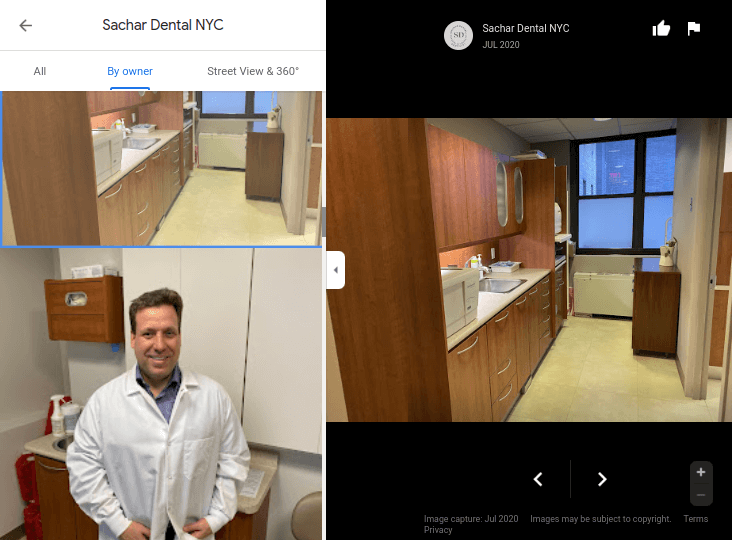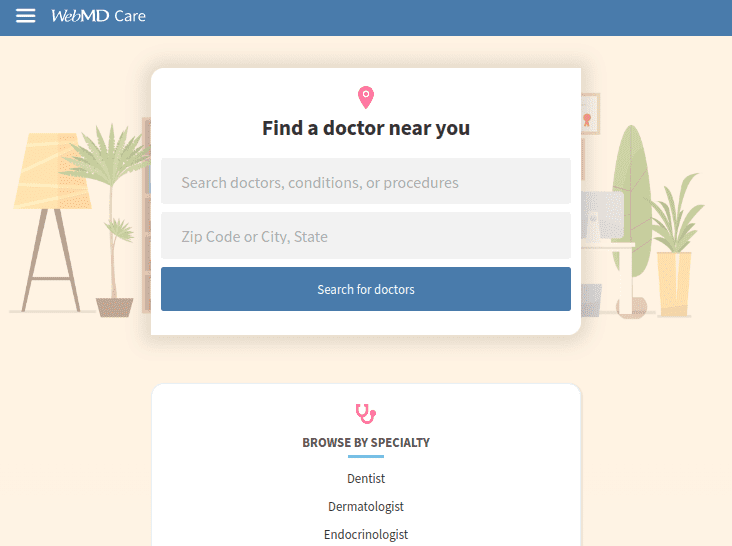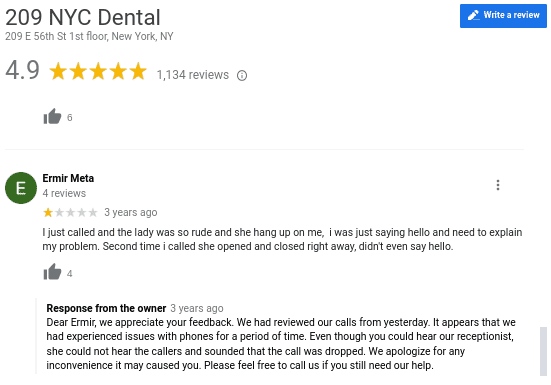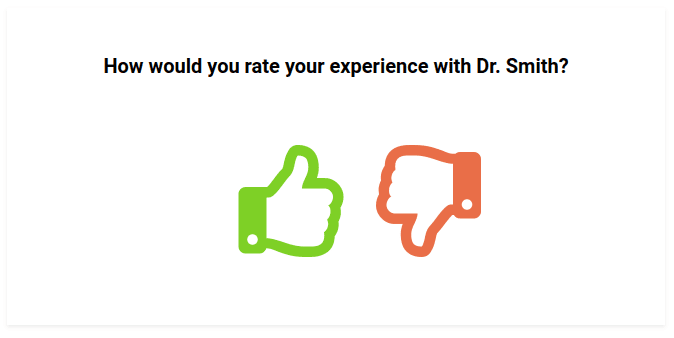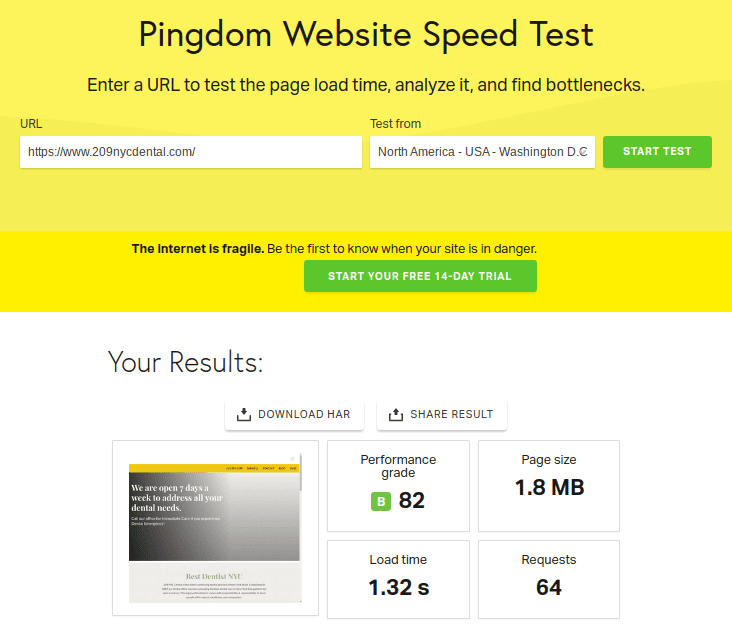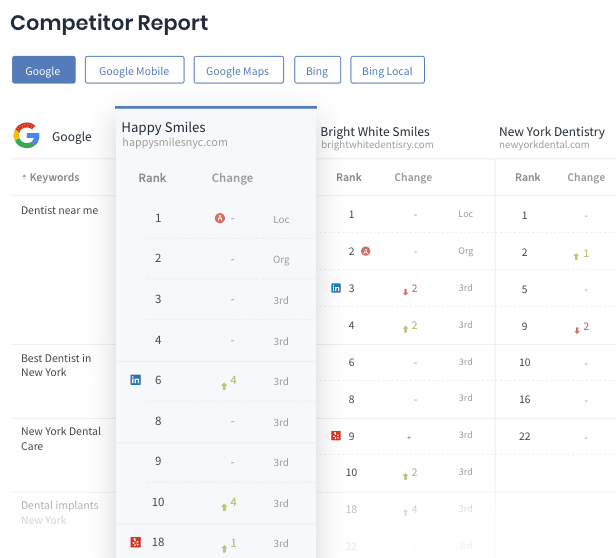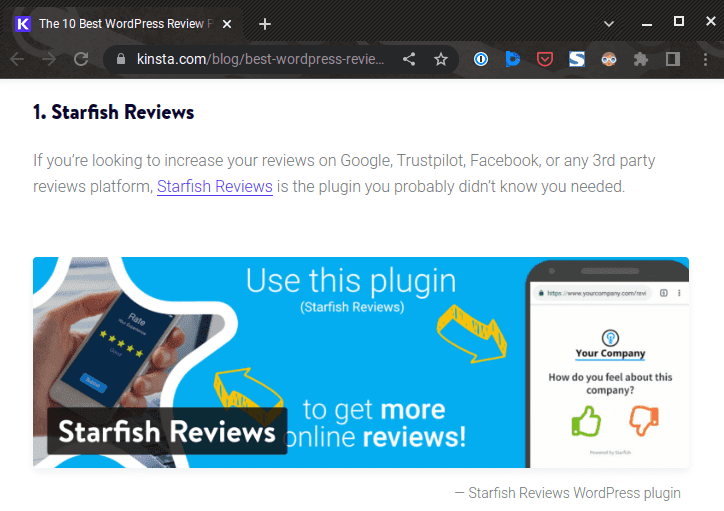Local SEO for Doctors: 9 Important SEO Tips for the Healthcare Industry

Local SEO for doctors is a specialized search engine optimization (SEO) strategy for the healthcare industry.
In this post, we cover what local SEO for doctors is as well as tips medical professionals can use to improve their local rankings.
Let's get started.
What is Local SEO for Doctors?
Local SEO for doctors involves modifying your SEO strategy to improve your rankings in local search results.
Google's search results page is often broken up into a few different subsections depending on your search query:
- Regular search results
- Local search results
- Ads
- Videos
- News articles
- Featured snippets
It's the local search results that concern us most when it comes to local SEO.
Google calls these results the "Local Pack." They appear when you enter local keywords into Google.
The top three local search results appear to the left of the Local Pack. A Google Maps snippet showing each location is featured to the right.
Searchers can filter results in the Local Pack by rating or hours.
They can also click the More places button to view additional results. However, 32.3% of clicks on the first page of Google go to the top three positions in the Local Pack.
This means it'd be much more beneficial for you to rank for one of these positions as it'll improve your click-through rate (CTR) from Google.
Local SEO for doctors is all about optimizing your healthcare website and Google listing in a way that improves your ranking within the Local Pack rather than improving your rankings in regular search results.
The Benefits of Local SEO for Doctors
Improving your healthcare website's rankings will take money if you hire someone to do it for you, time if you do it yourself or both.
So, why is it worth the effort?
Here are three reasons:
- You'll get more leads.
- You won't need to spend as much on advertising.
- It'll improve your healthcare website's authority in your area.
1. You'll get more leads.
There's a reason websites spend so much time and money to improve their rankings: traffic!
The more traffic you receive, the higher potential you have to acquire new patients.
Of course, you'll also have to optimize your website for conversions to take full advantage of that boost in traffic, but that's a whole 'nother conversation.
And in case you're wondering why you should pay so much more attention to digital marketing strategies like SEO and less on traditional advertising, check out these stats:
- 93% of consumers search online for local businesses. - BrightLocal
- 46% of Google searches have local intent. - Search Engine Roundtable
- There's been an average increase of ~425% in Google searches that contain the phrase "near me." - Google
2. You won't need to spend as much on advertising.
There's another reason why businesses put so much effort into increasing the amount of traffic they receive from Google: it's cheaper!
When you receive the majority of your traffic from organic search results, you won't need to spend as much on ads.
All that time you put into improving your healthcare practice's local SEO will pay off over time as your main traffic sources become Google searches you didn't need to pay for.
3. It'll improve your healthcare website's authority in your area.
Thanks to digital marketing and the Local Pack, other doctors and clinics in your area aren't just your competitors offline. They're now your competitors online as well.
By putting more effort into local SEO, you can outgrow your competitors and dominate local keywords related to your industry.
9 Tips On Improving Local SEO for Doctors
- Claim your local business listings.
- Choose the right business categories for your area of healthcare.
- Fill out the rest of your Google Business Profile listing.
- Manage your local citations.
- Manage your reviews.
- Get more reviews.
- Optimize your website.
- Target local keywords.
- Use local link building strategies.
1. Claim Your Local Business Listings
Your clinic or private practice is a small business. An important first step small businesses can take to improve their local rankings is claiming their local business listings online.
Google is most important, but you should also claim listings on Facebook, Yelp and Yellow Pages.
You'll need a Google Business Profile (formerly Google My Business) account for your Google listing.
Create listings on these sites if they don't yet exist.
Fortunately, claiming business listings is easy so long as no one else has claimed them.
On Google, find your listing, then click the link that says "Own this business?"
You'll need to verify ownership with a code sent to the phone number assigned to your listing. There are other verification methods if the number is incorrect.
Facebook and Yelp have similar methods for claiming business listings.
However, Facebook has an additional method you can use: sign into your Facebook business account → Business Settings → Add New Page → Request Access to a Page → Enter the page's URL → verify ownership.
Yellow Pages has a form you can fill out.
2. Choose the Right Business Categories for Your Area of Healthcare
Google Business Profile allows you to choose up to 10 business categories.
There are over 4,000 categories to choose from, so you should have no trouble finding a few to describe your healthcare practice.
For example, there are over 10 categories available for dentistry alone.
Start by assigning the most accurate category as your Primary category.
For example, there are categories for "Denture care center" and "Dental laboratory."
However, if your practice treats all other areas of dentistry as well, your Primary category should be "Dentist" or "Dental clinic."
See how many categories there are for your area of healthcare. Then, assign the one that best describes your services as your Primary category.
Assign the rest as secondary categories.
3. Fill Out the Rest of Your Google Business Profile Listing
Google's primary goal is to deliver the best possible results to its users. This means businesses with incomplete Google listings are less likely to rank higher than those with more extensive profiles.
Check out the dashboard (Home tab) of your business' Google Business Profile account.
It has a Complete Your Business Profile panel that lets you know how much of your profile is filled out.
It also has a list of items you still need to complete.
As a doctor or healthcare professional, your primary focus should be the Info, Services and Photos tabs.
Reviews are important as well, but we'll get to those later.
Start by filling in the following details:
- Business name
- Address
- Hours
- Phone number
- Website
- Opening date
Next, write a description for your business. This will appear at the bottom of your listing.
You only have 750 characters to work with. Describe your business and services as best as you can while staying within this limit.
You should also add tags to your listing. These are labeled Attributes, Accessibility, Amenities, Crowd, Health & Safety, and Service Options.
Only select tags your practice offers.
Edit your Services next.
Add each service your healthcare office offers. Suggestions will display automatically for each category, but you can also add custom ones.
Assign a price to each service if it makes sense for your healthcare practice. However, this is optional, so leave it set to No price if not.
Lastly, add images of your practice's place of business to your profile. Only showcase areas patients will see when they visit.
Don't use too much editing for these images. Instead, use realistic images that depict what patients can expect when they come in.
Save the filters and artistic shots for Instagram.
4. Manage Your Local Citations
Next, add your healthcare practice to other directories outside of Google, Facebook, Yelp and Yellow Pages.
This is called local citation management.
Citations are your practice's name, address and phone number (NAP), and they're likely already featured on other directories.
This is because bot scrapers called data aggregators find your information from other directories online and submit them to additional ones.
They don't always get it right, so managing citations, even ones you didn't create yourself, becomes important.
Plus, citations are another ranking factor, so they're worth managing.
Google likes to see the number of citations you have and that your citations are consistent across all directories.
At the same time, citations on irrelevant sites can have a negative impact on your rankings, so pick and choose wisely.
Here are a few directories for doctors:
Local SEO tools like Moz Local, BrightLocal, Yext, Semrush and Surfer Local can help you discover unmanaged citations and add you to directories your competitors are part of.
You can also use a service that specializes in listing management for healthcare professionals. Here are a few:
5. Manage Your Reviews
Let's talk about online reviews.
Online reviews are just as important to potential patients as they are to Google. In fact, 94% of consumers avoid businesses after reading bad reviews about them.
Plus, 94% of consumers are more likely to use businesses that have good reviews.
Obviously, Google Reviews are most important, but you should also pay attention to reviews on Facebook, Yelp and healthcare-specific directories.
If you don't have much time to dedicate to online reputation management, focus on your most popular directories instead.
Review management involves responding to positive and negative reviews.
Reputation management is a lot more critical in the healthcare industry. A bad reputation from past patients can earn you lawsuits and investigations, both of which can haunt you even if you come out on top.
Of course, there's a lot you can do offline to improve patient morale, but don't discount the importance online communication can have on the patient-doctor relationship.
Prioritize negative reviews. Follow this template when you respond:
- Respond as quickly as possible.
- Personalize your review by greeting your patient by name.
- Thank your patient for taking the time to leave a review.
- Own up to any mistakes you made (this may require speaking to all staff involved).
- Don't make excuses, but do provide explanations for what went wrong while respecting medical privacy laws.
- Briefly explain the improvements your practice plans on making to prevent this issue from happening again.
- Offer to make amends. The offer should match the severity of the issue, i.e. don't offer to clear a patient's bill for a minor issue.
Never use canned responses. Current and potential patients alike will catch on, and they won't be impressed by the lack of effort.
You also shouldn't ask patients to delete reviews. Believe it or not, negative reviews can have a positive effect on your reputation.
Potential patients like to see that you respond to negative feedback genuinely. Current patients may be encouraged to reach out to resolve issues instead of searching for another provider.
Respond to positive reviews as well, but in a much simpler manner. You don't need to do much else other than thanking your patient for reviewing and wishing them well.
You should also clean up your reviews by reporting spam and reviews you suspect are fake.
6. Get More Reviews
Reviews are another ranking factor. Not only does Google want to see positive reviews, they also want to see that you're receiving new reviews regularly.
Plus, the more positive reviews you receive, the higher your overall rating will be.
The most efficient way to receive positive reviews regularly is by asking for them.
This is something a tool like Starfish Reviews can help you automate.
It lets you set up a "review funnel." This is a page on your website where you can display a different message depending on the response your patient gives to a this-or-that question.
Begin your funnel with a prompt:
- "How would you rate your experience with us/me?"
- "How would you rate your experience with Dr. Smith?"
- "How would you rate your experience with our clinic/practice?"
Your patient has two options to choose from: positive or negative.
If they choose the positive option, ask them to leave a review on Google.
If they choose the negative option, give them a number to call or email address to write to for support.
Include the link to this review funnel page in an email sent to your patient shortly after their visit. You can also create a short link and give them a flier in person or through the mail if they're used to receiving letters from you.
It's a simple way to receive more positive reviews while also encouraging disgruntled patients to reach out.
7. Optimize Your Website
Your website should perform well. Test your load time with Pingdom using a test server that's closest to your practice's region.
Try to aim for a load time of two seconds or less.
You should also make sure your site's user interface is simple and easy to navigate.
Create meta descriptions and SEO titles for all pages on your website as well, especially your most essential pages.
Speaking of essential pages, there are a few you can add to your healthcare website to improve its rankings:
- Services - A page where you briefly list all of the services you offer.
- Individual Service Pages - A different page for each service you offer. Explain exactly what's involved with each service in detail.
- Condition Pages - Individual pages that cover each medical condition you specialize in.
8. Target Local Keywords
While you create pages and SEO titles, use keywords patients use to find you and your competitors.
For example, New York City residents likely enter keywords like "dentist nyc" or "dentist brooklyn" to find dentists in NYC.
Therefore, a dentist in this area should use variations of "Dentist in NYC" in their page and SEO titles as well as in their copy.
It'll help them rank for "dentist nyc" or "dentist near me" if the patient is searching from NYC.
There are plenty of SEO tools that let you know which keywords your competitors rank for. They also help you keep track of your own rankings.
BrightLocal is particularly good for this.
9. Use Local Link Building Strategies
Link building is the act of acquiring backlinks from authoritative sites in an effort to increase the authority of your own site.
Backlinks are links on other sites that lead back to your site.
They're a major ranking factor. The more high-quality backlinks you have, the better.
Google also wants to see variety in your backlinks. This means they'd rather see 50 backlinks from 50 different sites than 50 backlinks from a single authoritative site.
Local link building is the process of acquiring backlinks from sites relevant to your local medical practice.
Here are a few strategies you can use:
- Add your website to directories.
- Try to get featured on news sites in your area.
- Sponsor local events and schools in your area.
- Use SEO tools to see what backlinks your competitors have, and try to acquire them as well.
- Invite local influencers for a free visit in exchange for being featured on their website or YouTube channel. Instagram and TikTok influencers are great for short-term exposure, but the backlinks you acquire from these sites will have expiration dates as these platforms aren't made to carry links for long.
- Create medical-content relevant to your area or state.
Final Thoughts + Other Factors to Consider
Local SEO for doctors can be difficult to integrate into your day-to-day tasks, but it's important to manage if you want to stay competitive.
The most important strategies you can use are claiming your business listings, keeping your citations up to date, especially your Google Business Profile listing, and managing reviews.
If you want to take this to the next level, include these strategies as well:
- Make your website's design accessible.
- Make insurance and payment information readily available on your website.
- Allow patients to book appointments online.
- Create authoritative content regularly on your blog.
- Add a Team page to your website, and include doctor profiles.

